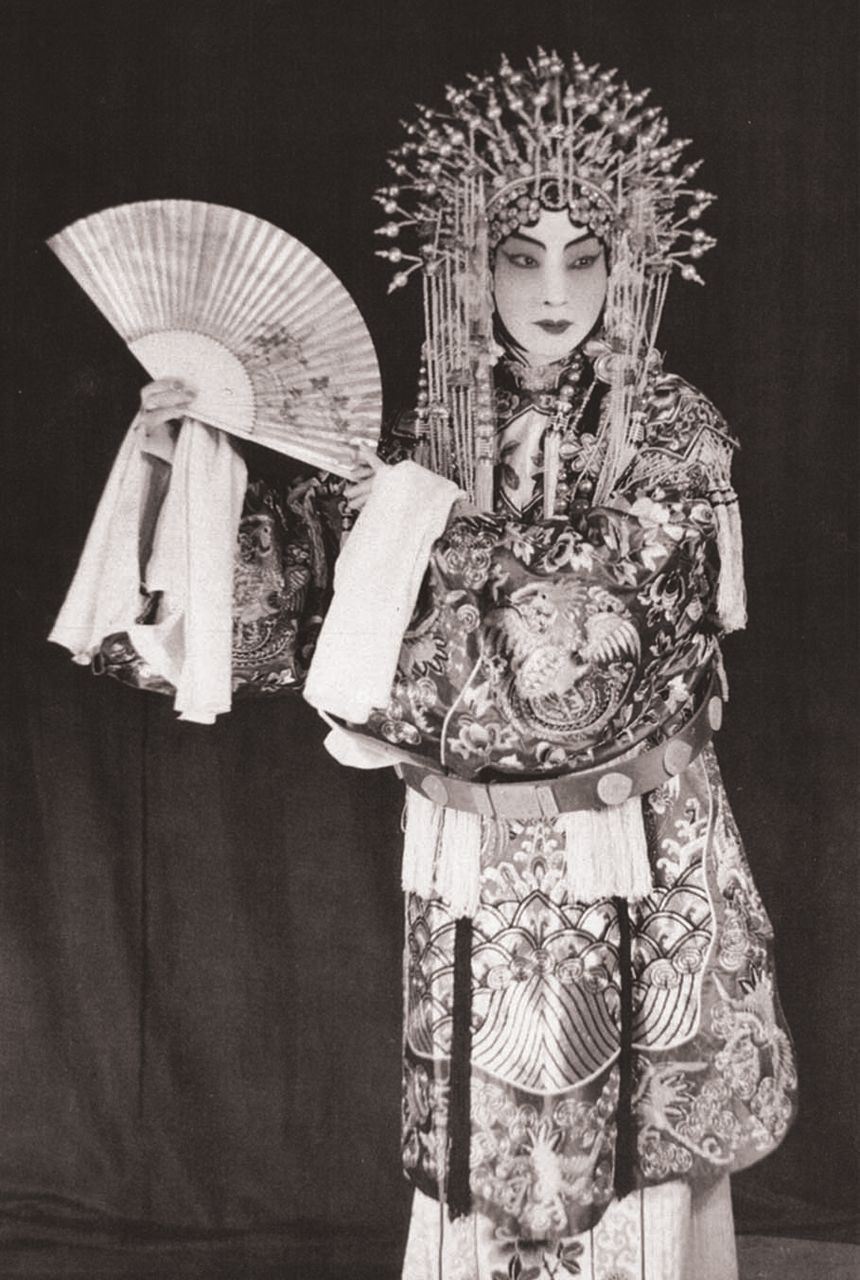Making history a breeze

Mei Lanfang was good at using a fan as a stage prop in his Peking Opera performances.
“Holding a fan by hand, a cool breeze comes.”
In ancient times, scholars and literati carried fans every day, and thus these masters of literature and art left abundant stories about their love of fans.
Peking Opera master Mei Lanfang (1894-1961) loved fans throughout his life and collected nearly a hundred of them. He used a fan as a stage prop in the opera Drunken Concubine and played Lady Yang. The fan added charming colors to the opera and audiences applauded Mei’s superb talent and performance.
The most precious fan he owned was a present from the Indian poet Tagore. In 1924, Tagore visited China to give some lectures, and Mei performed a specialized performance as the Goddess of the Luo River for Tagore. Tagore spoke highly of Mei’s exquisite opera and used a writing brush to immediately write a poem on a silk fan, giving the fan as a gift to Mei. The fan thus became a symbol of friendship and exchanges between Chinese and Indians.
Literary master and writer Lao She (1899-1966) lived his life to the fullest. He collected many folding fans on which more than 100 Peking Opera artists, including Mei, inscribed a poem or painted a picture. His collection was large enough for an exhibition. Lao She told his friends that a fan from Mei was his favorite. In the scene “Qingwen tears a fan” from the famous novel Dream of the Red Chamber, Mei painted a new fan as a stage prop every time as preparation, to later tear it up during the scene.
Musician Xu Zhiyuan felt it was a waste to simply discard these torn fans. So he picked up these fans and fixed them for his own personal collection. He knew Lao She was fond of fans and sent him one. Lao She was moved not only by Xu’s consideration but also Mei’s pursuit of perfection in art.
Chinese painting master Wu Hufan (1894-1968) collected 72 fans across more than two decades. The calligraphy on these fans were written by the “Number One Scholars” in the Qing Dynasty, which is a title conferred on those who receive first place in the imperial examinations. The calligraphy of these scholars is believed to have dignified structure, elegant lines and represent various styles, which makes Wu’s collection of fans unique.
